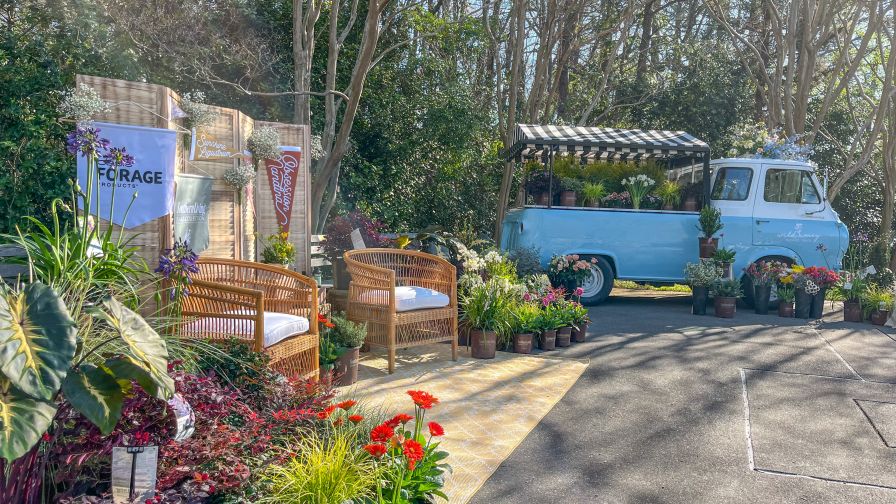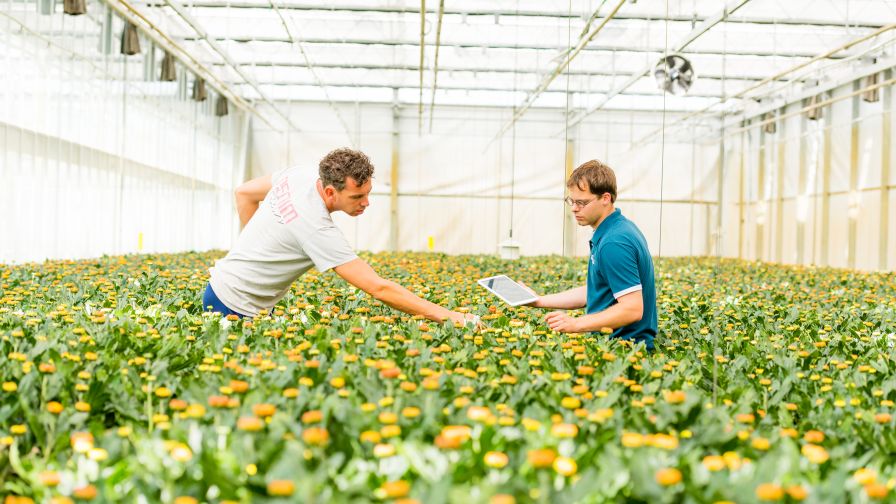Controlling, Measuring, and Manipulating Greenhouse Lighting
The Plant Lighting Short Course kicks off this week, with the first module offering an introduction to the ins and outs of crop lighting. The program takes place on October 14; click here to sign up.
Here’s an overview of what you can expect:
- “What is light, and how do we control it?” Light bears a unique importance for plant growth. In this presentation, Bruce Bugbee, a Professor of Environmental Plant Physiology at Utah State University, will review the terminology for light, review the history and advances of lighting efficiency over time, and compare the cost of photons from electricity with that of sunlight. Converting photons from sunlight through solar panels to electricity and then electricity back to photons is expensive. This is why greenhouses with supplemental light are so important to sustainable agriculture compared to farming without sunlight. The use of LEDs in research laboratories has changed our understanding of plant responses to light. Explore how the definition of PAR and spectral effects on phytochrome have both fundamentally changed because of this research.
- “How do we measure light?” In the context of plant lighting, light typically refers to photosynthetically active radiation (PAR), the radiation that drives photosynthesis. Traditionally, PAR has been defined as equal weighting of photons from 400 to 700 nm and no weighting of photons outside this range. PAR is typically measured with a quantum sensor, so called because a photon is a single quantum of radiation. But PAR sensor is a more intuitive name. Recent research indicates photons between 700 and 750 nm also drive photosynthesis through synergistic interaction with photons in the traditional PAR range. A new metric, extended photosynthetically active radiation (ePAR), is used to quantify the 400 to 750 nm range. While measurement of “light driving photosynthesis is essential, quantum sensors are not the only sensors encountered in a greenhouse setting. This presentation from Mark Blonquist. Chief Scientist at Apogee Instruments, will cover: 1) introduction to some of the radiation sensors used in controlled environment agriculture, including quantum sensors, pyranometers, foot-candle/lux sensors, red/far red sensors, and spectroradiometers; 2) importance of spectral response of quantum sensors, particularly for measuring LEDs; 3) demonstration of PAR measurement with quantum sensors and spectroradiometers.
- “How do we manipulate the light environments for plants?” The intensity and duration of sunlight is constantly changing. We decrease greenhouse light transmission during high-light (and temperature) conditions and supplement it when sunlight is limiting. We also lengthen or sometimes shorten the day length to regulate flowering of some crops, especially ornamentals. This session from Michigan State University’s Erik Runkle will provide a broad overview of the different shading and lighting applications to regulate the greenhouse light environment.
- “Unique crop requirements: vegetables vs. ornamentals” Light quantity, measured as daily light integral (DLI, mol·m-2·d-1) is an important driver of plant growth. For fruits, vegetables, and herbs, there is typically a direct correlation between the DLI and crop productivity. For ornamental crops such as flowering potted plants and bedding plants, a minimum DLI is important to maintain high quality (size, shape, and flower number), but since they are not sold based on biomass DLI requirements are not as high as vegetables. This session from Neil Mattson at Cornell University will discuss DLI requirements for common edible vs. ornamental plants. Photoperiod (or daylength) is also an important parameter, as some crops require either long or short days to flower and fruit. For other crops, a minimum night period is required to avoid physiological disorders. Photoperiod also influences the number of hours a day you can provide supplemental or source light and thus impacts lighting installation requirements. You will come away from this presentation with a clear idea of DLI and photoperiod requirements for common crops such as lettuce, tomatoes, strawberries, hemp, and bedding plants.
Learn more about Mattson’s presentation in the video below!
2
2
5
Controlling, Measuring, and Manipulating Greenhouse Lighting










